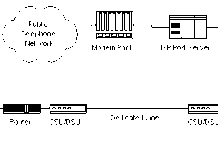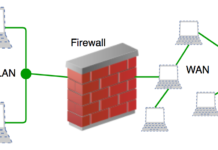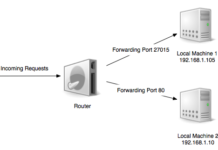HOW DOES YOUR MOBILE PHONE WORKS
The most of us mobile phone is the part of our life. Sure your curious minds always struck question how mobile phone makes call. Why the different generation of mobile phone communications.
Let’s explore the technology behind the mobile communication.
When you speak on your phone the voice is picked up by phones microphone. Microphone turns our voice into digital signal with the help of your mams sensor and IC.
Digital signal contains your voice in the form of 0s and 1s. Inside the phone receives the 0s and 1s and transforms in the form of electromagnetic waves. Electromagnetic waves transmit 0s and 1s by alternating wave characteristics such as amplitude, frequency, phase or combination of these.
For example: In case of frequency 0s and 1s are transmit by using low and high frequency respectively.
You could find a way transmit this electromagnetic waves to your friends phone. However electromagnetic waves are capable of travelling long distances. They loosen the strength due to the presence of physical objects, electrical equipment’s and some other environmental factors.
In fact there is no such issues even electromagnetic waves would not carry forever due to earths curved structure.
To overcome this cell towers were introduced in concept of cellular technology.
In cellular technology geographic area is divided into hexagonal cells each tower has its own tower and frequency slot.
Generally cell towers are connected through wires more specifically optical fiber cable. These optical fiber cables are laid underground or ocean to provide national or international connectivity.
Electromagnetic waves are produced by your phone are picked up by tower in your cell and convert them into high frequency light pulse. These light pulses are carry to the base transceiver box located at the base of the tower for further signal processing.
After processing your voice signal forward towards the destination tower after receiving the pulses the destination tower radiates it outwards in form of electromagnetic waves to your friends phone and receive the signal. This signal goes in reverse process. The mobile communication is not entirely wireless communications. They used a wired medium too this is how mobile communication is carried out.
Mobile communication is only successful when your tower transfer signal to your nearby friends tower.
But how is to locate your friends tower?
For this process cell tower gets help from the mobile switching center(MSC). MSC is the center point of grouping of cell towers.
When you purchase a sim card all these subscription information registered is specified MSC. This MSC is your home MSC home MSC source inform such as service plans, your current location and your activity status. If you move outside the range of home MSC the new MSC serves instead of foreign MSC. As you enter foreign MSC region it communicates with home MSC in short your home MSC in which MSC you are in. to understand which location cell subscriber is within the MSC area MSC uses a few techniques.
One way is update the subscriber location after a certain period. When phone cross predefined number of stations again location update done.
Let us why frequency spectrum is very important in the mobile phone communication.
To transfer 0s and 1s in digital communication each subscriber is allocated a frequency range. However frequency spectrum is available for cellular communication is quite limited and there are billions of subscribers. This issue is solved with help of two technologies.
- Frequency slot distribution
- Multiple access technique
First technique different frequencies are allocated to different cell towers. In multiple access techniques this frequency slot is efficiently distributed among the all active users in the cell area.
Why different generation of mobile technologies?
1 Generation
1G originally allowed users for first time carry a phone without a cable attached to it, but 1G supported for major problems.
First problem is wireless transmission is analog format. Analog signals are easily altered by external sources. So provide very poor voice quality and poor security.
Second problem is used frequency division multiple access technique which uses spectrum inefficient way.
This lead to second generation of mobile communication
2nd Generation
It uses digital multiple access technology namely TDMA or CDMA technology. 2nd generation uses revolutionary data services SMS and internet browsing.
3rd Generation
This technology was focus on a giving higher data transfer speed. It uses wide band code division multiple access technique along with an increase in bandwidth to achieve this. 3G speed of 3 Mbps allows the transfer data to uses, videos, voice calls etc. 3G is the huge step for the transformation of basic phone to a smart phone.
4th Generation
Which achieves speed of 20-100 Mbps this is suitable for high resolution movies in TV. This higher speed is made possible by orthogonal frequency division multiple access (OFDMA) and multiple input multiple output (MIMO) technology. MIMO uses multiple transmitter and receiver antenna inside both mobile phone and towers.
5th Generation
It is rolled out soon it will use enhanced MIMO technology and millimeter waves. It provides seamless conductivity to support internal things such as driver-less cars and smart homes.











